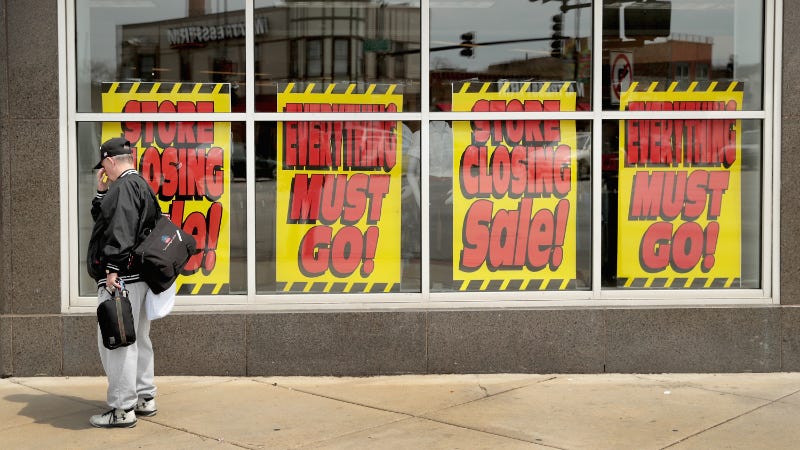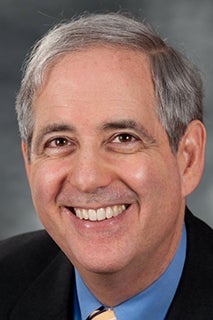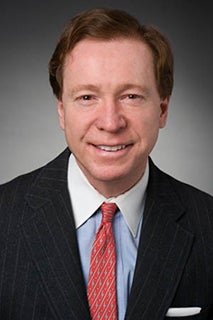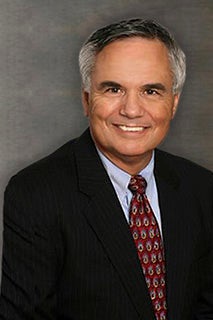How likely is a recession by the 2020 elections? Here’s what top economists say

One major question continues to loom over the U.S. economy right now: How much longer will the record-long expansion last?
The 2-year, 10-year Treasury yield curve – a closely followed recession indicator – inverted Aug. 14 for the first time since the Great Recession. Manufacturing in the U.S. is in contractionary territory. Meanwhile, business investment has slowed and confidence is dimming because of geopolitical trade wars and slowing global growth.
Economists say it’s increasingly likely that those risks are going to hurt the U.S. economy. The majority (90 percent) of experts polled for Bankrate’s Third-Quarter Economic Indicator survey said that these threats are more heavily tilted toward the downside.
But how likely is it that a recession is on the horizon, at least between now and the presidential election in November 2020? You can breathe a sigh of relief: Most economists say it’s possible – but not probable, with the average forecast betting on a 41 percent chance.
But what could make or break that likelihood? Here’s what top economists are saying.

(Odds of a recession between now and the November 2020 election are) 25 percent. Consumers are in an excellent position to carry this record expansion through the 2020 election. Hyper focus on the behavior of the yield curve and the trade spat with China ignores the strong position the U.S. consumer is in right now and should continue to be (in) over the next 18 months.— Sean Snaith, director, Institute for Economic Forecasting at the University of Central Florida

Current projections show a 55 percent chance of a recession in the second half of 2020. The biggest risks are trade war uncertainty and (a) global slowdown.— Yelena Maleyev, associate economist, Grant Thornton LLP

(Odds of a recession between now and the November 2020 election are) 25 percent. The risk of a recession is increasing. Erratic policy is raising uncertainty and anxiety, which may disrupt activity and destroy consumer and business confidence, leading to recession.— Bob Hughes, sr. research fellow, American Institute for Economic Research

(Odds of a recession between now and the November 2020 election are) 50 percent. As signs of a broader global slowdown in economic growth emerge, along with ongoing trade disputes between the U.S. and some of its key trading partners, business and consumer confidence have been shaken, which may reduce future business investment and consumer spending. … A slowdown in global economic growth, the potential repercussions from the current trade dispute between the US and China, and other potential market moving events such as Brexit and US budget policy uncertainty, pose significant downside risks to our forecast.— Mike Fratantoni, chief economist, Mortgage Bankers Association

The question we keep asking ourselves is how many more blows can this aging business cycle take? We expect the economy will barely avoid a recession next year, and the consumer should get credit for that. But the escalating trade dispute, along with the havoc it has caused to supply chains and how it dampened economic growth worldwide will all be with us — at least until 2021. … What could ultimately tip the economy into a downturn would be a wave of global competitive currency devaluations or a major new geopolitical eruption.— Bernard Baumohl, chief global economist, The Economic Outlook Group, LLC

(Odds of a recession between now and the November 2020 election are) 35 percent. (The) escalating trade war with China, (a) hard-Brexit (and) manufacturing recession all point to much slower U.S. growth ahead.— Scott Anderson, chief economist, Bank of the West

(Odds of a recession between now and the November 2020 election are) 50 percent. Tariffs have boosted costs, invited retaliation, disrupted supply chains, and undermined business investment, and it may be too late to turn things around.— Scott J. Brown, chief economist, Raymond James

(Odds of a recession between now and the November 2020 election are) 30 percent. Trade frictions are already hurting the stock market and reducing business investment. This unsettling trend could accelerate unless trade tensions are lessened.— Lawrence Yun, chief economist, National Association of REALTORS(r)

(Odds of a recession between now and the November 2020 election are) 45 percent. The administration might underestimate the impact of a trade war with China and the Federal Reserve will not have the tools to counteract the impact of a global downturn and falling business confidence and investment. Unless the Trump Administration is willing to make more trade concessions, China’s slowing and its ripple effects across the globe, lower U.S. business confidence, tariff disruptions to supply chains and consumer prices, and falling stock prices could all pose sizable risks.— Lynn Reaser, chief economist, Point Loma Nazarene University

(Odds of a recession between now and the November 2020 election are) 55 percent. The major risk to the economy is the ongoing and growing trade war. It is hard to predict where this will end with the administration frequently reversing course. But overall, the effect has been to ratchet up barriers to trade, which hurts everyone.— Bernard Markstein, president and chief economist, Markstein Advisors

(Odds of a recession between now and the November 2020 election are) 75 percent. While the economy is reasonably strong at present, monetary policy tightening from last December’s hike is still in the pipeline. In addition, fiscal policy is drying up. The global economy is slowing sharply. Manufacturing in the U.S. is on the verge of recession. The trade war is weighing on the economy. Leading indicators are signaling recession: inverted yield curve, negative spread of consumer expectation below current situation, near record high net worth/income and corporate debt/GDP, transportation data, and the acceleration of creative accounting.— Dan North, chief economist, Euler Hermes North America

(Odds of a recession between now and the November 2020 election are) 50 percent… Risks of a recession are elevated and rising.— Joseph Brusuelas, chief economist, RSM

(Odds of a recession between now and the November 2020 election are) 40 percent. While economic fundamentals remain solid in 2019, there are several downward risks looming on the horizon. A prolonging of the current trade war is likely to broaden its impact on US exporters and consumers, through higher prices. A moderation in the pace of hiring brought about by companies’ concern over the economic outlook is likely to translate into a slowdown in wage growth, leading to softness in consumer spending. These factors could provide impetus for a slowdown toward the midpoint of 2020.— George Ratiu, senior economist, Realtor.com

Recession odds for 2020 remain elevated at 40 percent. We expect domestic strength will more than offset global headwinds. However, the longer the drags from policy uncertainty, trade tensions, weakening global growth and tightening financial conditions linger, the higher the risk of a hard landing.— Gregory Daco, chief U.S. economist, Oxford Economics

(Odds of a recession between now and the November 2020 election are) 75 percent. I think the trade war will prove to be the catalyst for this recession, and that it will happen sooner rather than later.”— Amy Crews Cutts, CEO and chief economist, AC Cutts & Associates LLC

(Odds of a recession between now and the November 2020 election are at) zero. (Downside risks include) global trade weakness, weaker consumer confidence/spending.— John E. Silvia, CEO and founder, Dynamic Economic Strategy

(Odds of a recession between now and the November 2020 election are) 30 percent. This administration, like most administrations, will pull whatever levers it can, and make whatever deals it must, to prevent [a] recession. Still, an administration has only so much influence over a $20 trillion economy, especially with interest rates so low already— Robert Frick, corporate economist, Navy Federal Credit Union

(Odds of a recession between now and the November 2020 election are) 40 percent. U.S. financial markets are on edge because of the escalation in the trade tensions between the U.S. and China, and we have updated our subjective probabilities of how this will play out through Trump’s first term. Our baseline assumption, with odds of 35 percent, is that the current tariffs plus the 10 percent on the remaining $300 billion in Chinese imports, scheduled for Sept. 1, remain in place through Trump’s first term. We assign a 25 percent likelihood that there is further escalation in the form of 25 percent tariffs on all Chinese imports. The likelihood of a full-blown trade war, which includes 25 percent tariffs on all Chinese imports and tariffs on imported vehicles and parts, have risen to 25 percent. The best-case scenario is a sustained de-escalation in the trade war, but those odds are only 20 percent.— Ryan Sweet, director of real-time economics, Moody's Analytics
Why we ask for feedback Your feedback helps us improve our content and services. It takes less than a minute to complete.
Your responses are anonymous and will only be used for improving our website.
You may also like

Survey: Odds of a recession by September 2024 fall to 46%





